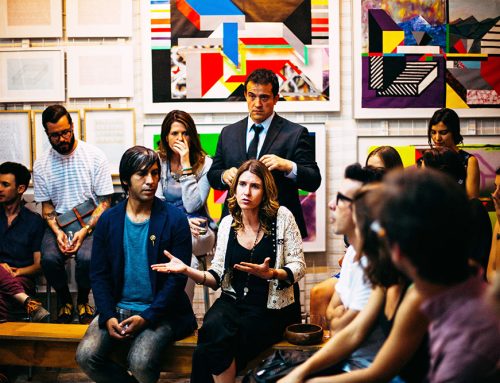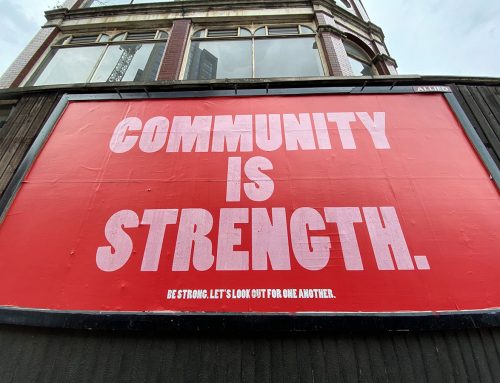Many people know that walking and cycling are the cleanest ways to get around a city. But what’s less obvious are the enormous benefits for health, road safety, equity and local businesses and neighbourhoods when their streets are walkable, safe and welcoming.
Edmonton City Council’s Urban Planning Committee has called on city administration to explore completion of a proposed expansion to the bike network by 2026.
What We’re Reading
THE FRONT PAGE
Active Cities and the Future of Mobility

Photo courtesy of photos.edmonton.ca
Many people know that walking and cycling are the cleanest ways to get around a city. But what’s less obvious are the enormous benefits for health, road safety, equity and local businesses and neighbourhoods when their streets are walkable, safe and welcoming.
Cities across Canada, North America and globally are re-evaluating how residents get around and trying to increase how many of us walk or bike, in an effort to reduce the CO2 our current transportation systems create.
Edmonton is no exception. We’re making moves alongside cities like Calgary, Montreal, Portland, and international superstar cities like Paris, Barcelona and New York among many others.
 On February 15, Edmonton City Council’s Urban Planning Committee called on city administration to explore completion of the bike network in the redeveloping area by 2026.
On February 15, Edmonton City Council’s Urban Planning Committee called on city administration to explore completion of the bike network in the redeveloping area by 2026.
While this decision tracks with the emergence of a bike-friendly dialogue in Edmonton and in many Canadian cities, the vast majority of Edmonton still use cars for their trips within the city. For Leagues and policy makers in Edmonton, the next four years will be about asking what it would take to really give Edmontonians the opportunity to drive less.
A quote from a recent article in Strong Towns notes that “We don’t need to convince every person who likes their car, SUV, or truck that it would be more virtuous or sensible or rational to get around some other way. We need to obsess over bringing those numbers steadily down through many, many incremental changes: to transit, to bike and walk safety, to land use patterns. It’s not “ban cars,” it’s give people the choice to use their cars a whole lot less.”
 While there are many common questions when it comes to cycling year round, the main factor that keeps cycling rates low in many cities including Edmonton is that most people are not comfortable sharing space on streets with drivers in fast-moving cars and trucks.
While there are many common questions when it comes to cycling year round, the main factor that keeps cycling rates low in many cities including Edmonton is that most people are not comfortable sharing space on streets with drivers in fast-moving cars and trucks.
It’s for good reason that new and experienced cyclists can feel nervous about traveling by bike, especially when their city has not had a reputation for cycle safety in the past. More people will choose to ride a bike when they have safe places to ride, and more riders mean safer streets.
This need for safe spaces and a feeling of ownership over the results means investing in public engagement, small community-led projects and yes, raised, segregated and wider bike lanes that have proven to be far more effective at encouraging cycling and reducing injuries on our city streets.
 While safe, efficient and enjoyable facilities make cycling possible, it’s reducing how far we need to travel to meet most of our daily needs that will make cycling desirable. Adopting a 15-minute city approach that encourages development of a diversity of services within our neighborhoods.
While safe, efficient and enjoyable facilities make cycling possible, it’s reducing how far we need to travel to meet most of our daily needs that will make cycling desirable. Adopting a 15-minute city approach that encourages development of a diversity of services within our neighborhoods.
Encouraging a cultural shift also means engaging widely to identify barriers like long and cold winters, storage and safety, and working together to find creative or already proven solutions.
Leagues and citizens need to be part of the decision making, planning, problem solving and development of supporting infrastructure like storage, charging and even repairs.
Edmonton has an incredible culture of collaboration, a willingness to lead and through Leagues, a means to engage, experiment and innovate.
THE MONTHLY BRIEF
Discover more of what matters to you. The Monthly Brief provides you opportunities to get involved, stay connected and learn what is going on in Leagues, the EFCL and city-wide.
Item 1. Affordable Housing – League approach to housing justice
What actions might help ‘pivot’ Edmonton’s housing system towards the realization of the right to adequate housing? What knowledge gaps or practical tools are required to support these actions? What role is there for leagues in this process?
A rights based approach to housing requires immediate action that treats those in need of housing as rights holders, meaningfully involves them in housing policy decisions, welcomes everyone into community, addresses discrimination and equality, and eliminates homelessness in the shortest possible time.
Item 2. Janes Walk – Annual sign up
Explore your Community with Jane’s Walk from May 6th to 8th, 2022.
EFCL wants to help you lead a Jane’s Walk in your neighbourhood and is happy to support you in joining with residents and folks of all skill sets to tell stories about your communities, explore the city and connect with neighbours.
The EFCL provides a step by step guide to planning and facilitating a walk in your neighbourhood.
Item 3. Civics Directors – Community
The EFCL is committed to positive change by empowering Leagues and equipping you with ways to engage in your own league and with each other.
In addition to resources specifically developed for your role, we believe that the wisdom and ideas of practitioners across Edmonton should be shared and the collective skills, resources, and experiences you bring are invaluable in helping others succeed in their roles.
Here are a few ways to get connected to the civics and planning community of practice.





